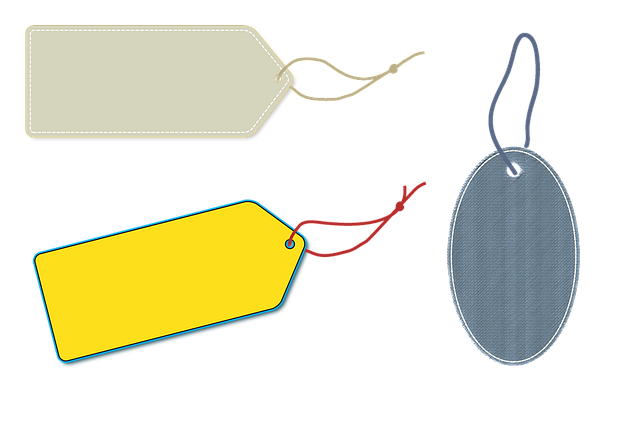Proper Yard Waste Removal and Recycling offers substantial environmental benefits by reducing landfill strain, cutting greenhouse gas emissions, and fostering a circular economy. Techniques like composting create nutrient-rich soil amendments for sustainable gardening. Implementing structured programs with dedicated collection days, efficient tools, and designated areas ensures easy lawn debris management. Educating household members on segregation and regularly reviewing lawn care routines contribute to environmental sustainability and healthier ecosystems while minimizing the ecological footprint of hazardous substance disposal.
Lawn debris—from clippings to fallen leaves—can quickly pile up, posing both aesthetic and environmental challenges. Understanding the types and impact of these materials is key to effective yard waste removal and recycling. This article explores the benefits of proper yard waste disposal practices, offers strategic solutions for easy lawn debris removal, delves into common waste compaction methods, and provides tips for sustainable, eco-friendly practices in your own backyard. Discover how implementing these techniques can enhance your outdoor space while minimizing environmental impact.
- Understanding Lawn Debris: Types and Their Impact
- Benefits of Proper Yard Waste Disposal and Recycling
- Effective Strategies for Easy Lawn Debris Removal
- Common Methods of Compacting and Disposing Yard Waste
- Environmental Impact and Tips for Sustainable Practices
Understanding Lawn Debris: Types and Their Impact

Lawn debris, a term encompassing various organic materials, is an inevitable by-product of maintaining a lush green yard. From grass clippings and leaves to twigs and small branches, these elements, if not properly managed, can pose significant challenges. Yard Waste Removal and Recycling are essential aspects of sustainable lawn care, addressing the impact of this debris on both your yard’s health and the environment.
Different types of lawn debris have distinct effects. Grass clippings, for instance, when left to accumulate, can lead to nitrogen depletion in the soil due to their high nitrogen content. Leaves, if not composted or removed, may smother grass, hindering its growth. Effective Yard Waste Removal strategies involve recycling these materials through composting or chipping, which not only reduces yard waste but also enriches the soil and provides a natural mulch for plant health.
Benefits of Proper Yard Waste Disposal and Recycling

Proper yard waste disposal and recycling come with numerous benefits, both for your local environment and your community as a whole. By responsibly managing grass clippings, leaves, and other organic materials, you’re reducing the strain on landfills, which helps to conserve space and decrease the environmental impact of waste accumulation. This method also prevents the release of harmful greenhouse gases, such as methane, that are produced when yard debris decomposes in landfills.
Additionally, recycling yard waste can contribute to a circular economy by transforming these materials into valuable resources. Composting, for instance, allows you to create nutrient-rich soil amendments that enhance soil fertility and reduce the need for synthetic fertilizers. This not only promotes sustainable gardening practices but also fosters a healthier ecosystem, supporting local agriculture and food production.
Effective Strategies for Easy Lawn Debris Removal

Effective Strategies for Easy Lawn Debris Removal
One of the most effective strategies for easy lawn debris removal is to implement a regular yard waste removal and recycling program. Schedule specific days each week to collect clippings, leaves, and other organic materials. This not only keeps your lawn tidy but also contributes to environmental sustainability by reducing the amount of waste sent to landfills. Consider investing in a high-quality lawn vacuum or mulcher to efficiently gather and process debris, transforming it into nutrient-rich compost that can be returned to the soil, benefiting your lawn’s health.
Additionally, proper planning and maintenance can significantly simplify the disposal process. Create designated areas for different types of yard waste, such as a compost pile for organic matter and a recycling bin for non-biodegradable materials like plastic bags and containers. Educate all household members about responsible waste segregation to ensure consistent adherence to these practices. Regularly reviewing and updating your lawn care routine can help make debris removal a hassle-free task, contributing to a healthier environment and a better-maintained lawn.
Common Methods of Compacting and Disposing Yard Waste

Many homeowners face a persistent challenge: how to efficiently compact and dispose of yard waste. Traditional methods involve piling and bagging, which can be labor-intensive and space-consuming. Thankfully, innovative solutions have emerged to streamline this process. One popular approach is utilizing yard waste composters, which reduce the volume of organic materials significantly. These machines efficiently transform grass clippings, leaves, and small branches into nutrient-rich compost, fostering sustainable yard waste removal and recycling practices.
Additionally, yard waste management companies offer collection services, picking up piles and transporting them to facilities for processing. This professional approach not only eases the physical burden but also ensures proper disposal and potential recycling of materials like wood chips, which can be used in landscaping or as fuel for energy production. These modern strategies simplify yard waste handling while promoting environmental stewardship.
Environmental Impact and Tips for Sustainable Practices

Lawn debris disposal doesn’t have to be a burden on both your time and the environment. Implementing sustainable practices for yard waste removal and recycling can significantly reduce its environmental impact. Instead of relying solely on traditional methods like burning or landfilling, consider compostable alternatives. Organic materials from your lawn, such as grass clippings and leaf waste, can be transformed into nutrient-rich compost through home composting or local collection programs. This not only diverts a substantial amount of yard waste from landfills but also enriches soil health, promoting greener and more sustainable landscapes.
To further minimize the ecological footprint, explore options for recycling other types of lawn debris. Wooden lawn furniture, play equipment, and even certain types of landscaping materials can be repurposed or recycled through specialized programs. Additionally, proper disposal of hazardous substances like pesticides and fertilizers is crucial to prevent water pollution. Opting for eco-friendly alternatives and adhering to responsible waste management practices ensures a healthier environment while keeping your yard looking its best.
Lawn debris disposal doesn’t have to be a chore. By understanding the types of debris, embracing proper recycling practices, and implementing effective removal strategies, you can contribute to sustainable environmental practices while ensuring a cleaner, healthier yard. Incorporating compacting methods and exploring eco-friendly disposal options further streamlines the process, making yard waste management simple and efficient for any homeowner. Let’s make lawn care easier and more environmentally responsible together through informed Yard Waste Removal and Recycling.



